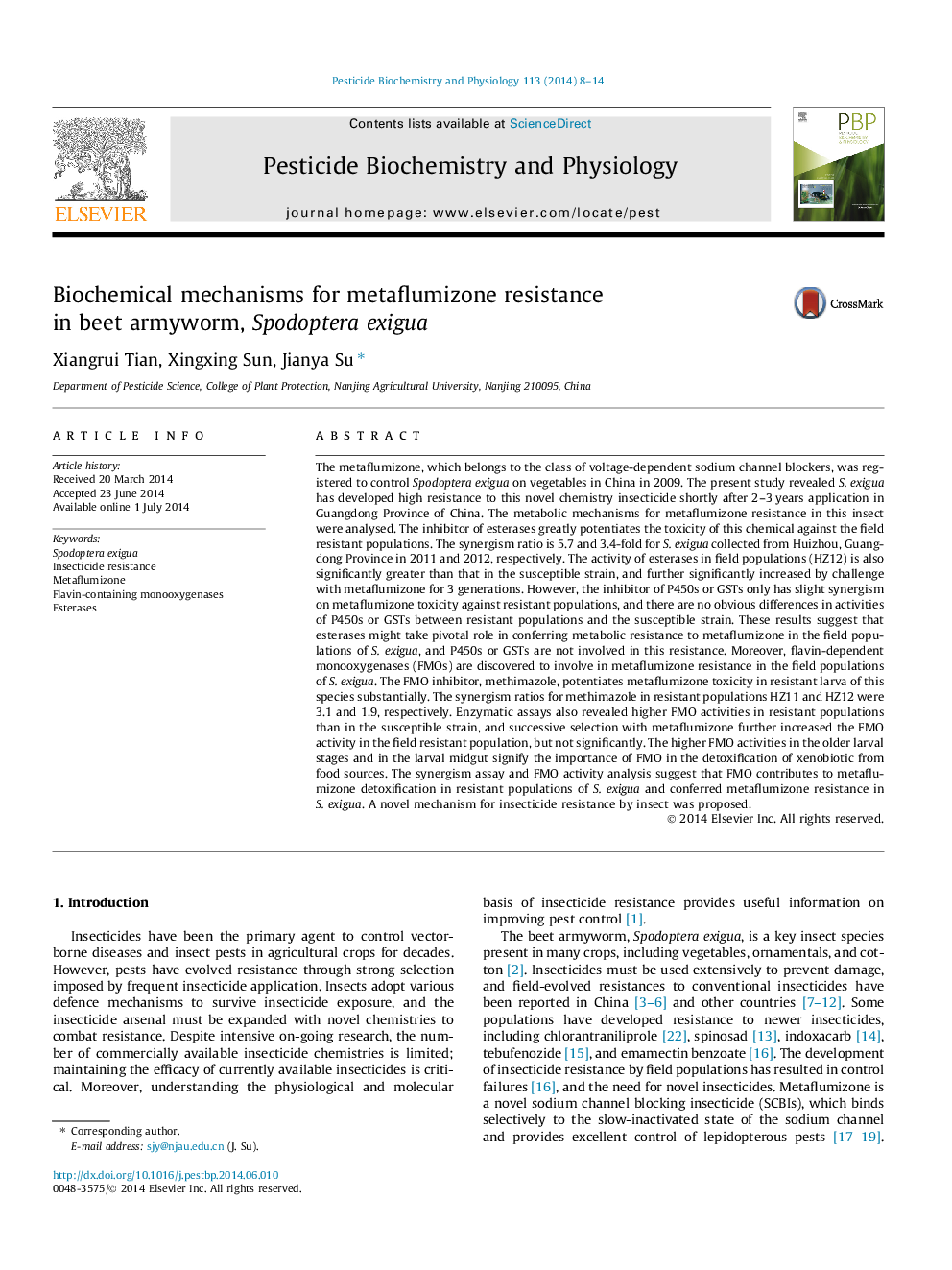| کد مقاله | کد نشریه | سال انتشار | مقاله انگلیسی | نسخه تمام متن |
|---|---|---|---|---|
| 2009317 | 1541786 | 2014 | 7 صفحه PDF | دانلود رایگان |

• Esterases confer to metaflumizone resistance in S. exigua.
• Methimazole potentiated metaflumizone toxicity in resistant larvae of beet armyworm.
• The higher FMO activities in the older larval stages and in the larval midgut were found.
• FMOs contribute to metaflumizone resistance in S. exigua.
The metaflumizone, which belongs to the class of voltage-dependent sodium channel blockers, was registered to control Spodoptera exigua on vegetables in China in 2009. The present study revealed S. exigua has developed high resistance to this novel chemistry insecticide shortly after 2–3 years application in Guangdong Province of China. The metabolic mechanisms for metaflumizone resistance in this insect were analysed. The inhibitor of esterases greatly potentiates the toxicity of this chemical against the field resistant populations. The synergism ratio is 5.7 and 3.4-fold for S. exigua collected from Huizhou, Guangdong Province in 2011 and 2012, respectively. The activity of esterases in field populations (HZ12) is also significantly greater than that in the susceptible strain, and further significantly increased by challenge with metaflumizone for 3 generations. However, the inhibitor of P450s or GSTs only has slight synergism on metaflumizone toxicity against resistant populations, and there are no obvious differences in activities of P450s or GSTs between resistant populations and the susceptible strain. These results suggest that esterases might take pivotal role in conferring metabolic resistance to metaflumizone in the field populations of S. exigua, and P450s or GSTs are not involved in this resistance. Moreover, flavin-dependent monooxygenases (FMOs) are discovered to involve in metaflumizone resistance in the field populations of S. exigua. The FMO inhibitor, methimazole, potentiates metaflumizone toxicity in resistant larva of this species substantially. The synergism ratios for methimazole in resistant populations HZ11 and HZ12 were 3.1 and 1.9, respectively. Enzymatic assays also revealed higher FMO activities in resistant populations than in the susceptible strain, and successive selection with metaflumizone further increased the FMO activity in the field resistant population, but not significantly. The higher FMO activities in the older larval stages and in the larval midgut signify the importance of FMO in the detoxification of xenobiotic from food sources. The synergism assay and FMO activity analysis suggest that FMO contributes to metaflumizone detoxification in resistant populations of S. exigua and conferred metaflumizone resistance in S. exigua. A novel mechanism for insecticide resistance by insect was proposed.
Fig. 2. FMO activities in different developmental stages and different larval tissues of S. exigua.Figure optionsDownload as PowerPoint slide
Journal: Pesticide Biochemistry and Physiology - Volume 113, July 2014, Pages 8–14